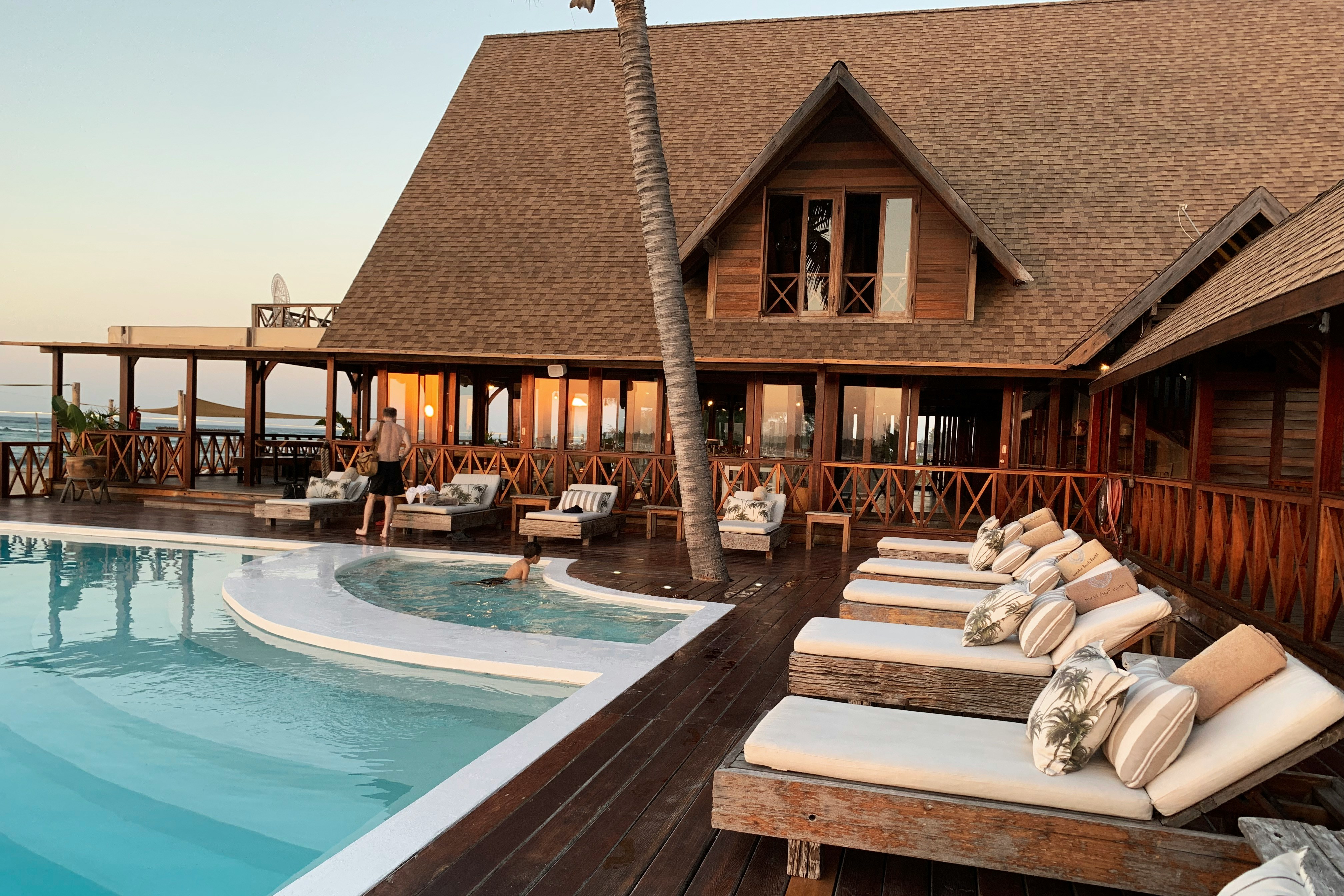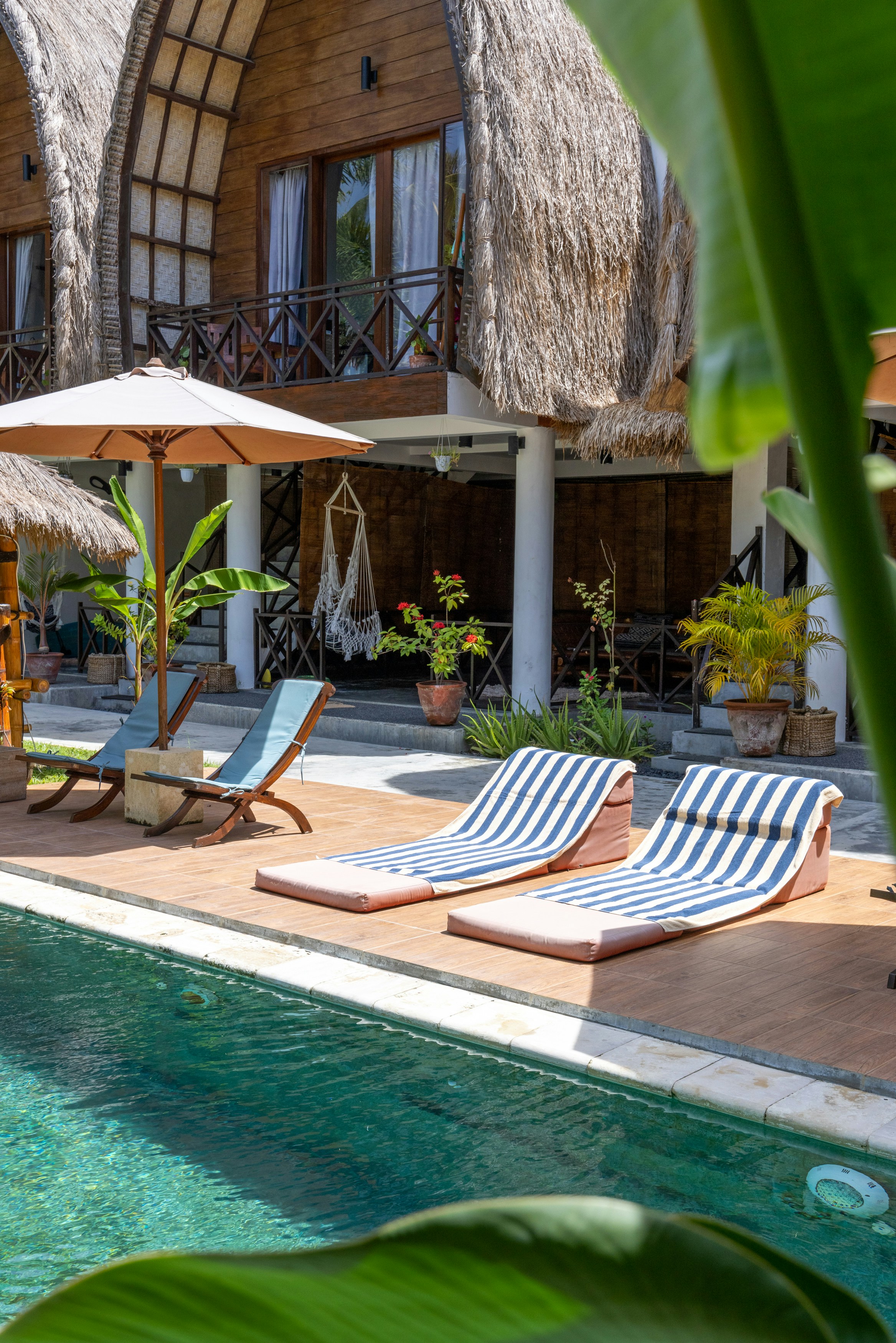Ephesus Archaeological Museum
Ephesus Archaeological Museum things to do, attractions, restaurants, events info and trip planning
Plan your stay
Posts
Visit the Ephesus
Olivia Smith
360
In Ephesus the archeological artifacts that were dug up between 1867-1905 were transported to the British Museum ; and findings from 1905-1923 were taken to Vienna. With the founding of the New Turkish Republic, the goverment forbade taking antiques out of the country and required the artifacts that were taken outside the country back to Turkey. In 1964, the Ephesus Museum was founded and the findings from the excavations at Ephesus archeological site and around were put to this museum. At this charming and well-organised museum, there are not only findings from the ongoing excavations at Ephesus archeological site, but also the artifacts from the Cukurici Mound, the basilica of St John, and the Temple of Artemis. At one of the sections, one can see a wide collection of coins dating back to when money was first used in history. The museum of Ephesus, unlike most of other museums, is not designed according to the chronological order but the galleries are filled with artifacts according to a theme. Galleries include: 1- Sculptures from the fountains 2- Finds from the Terrace Houses 3-Coins 4-Ephesus through the Ages 5-Courtyard with column capitals and tombs 6- Hall of Mother Goddess cult 7- Hall of Ephesus Artemis 8- Hall of Imperial Cult 9-Museum Shop and Cafe Before visiting these galleries, one should not miss the 3D simulation video of ancient Ephesus where visitors can visualize the setting of the ancient city and may have an idea about how the buildings used to look like. The video can be watched in three languages; Turkish, English and German and it lasts 10 minutes. The video room is the first room before the fountain statues gallery. Some of the most remarkable artifacts in the museum are the Ephesus Artemis statue, Priapos statue, the head of Socrates, the Egyptian priest, the Eros with rabbit and the oldest piece – a stamp- found in Cukurici Mound- dating back to 6200 BC. Ephesus Archaeological Museum is located in Selcuk town, across the main minibus terminal.
Noor inko
00
Éfeso (em grego clássico: Ἔφεσος; em latim: Ephesus; em turco: Efes) foi uma cidade grega antiga[1][2] na costa de Jônia, três quilômetros a sudoeste de Selçuk, província de Esmirna, Turquia. Foi construída no século X a.C. no local da capital anterior de Arzaua[3][4] por colonos gregos jônicos. Durante a era grega clássica foi uma das doze cidades da Liga Jônica. A cidade floresceu depois que veio sob o controle da República de Roma em 129 a.C. Durante o período romano, foi por muitos anos a segunda maior cidade do Império Romano, apenas atrás de Roma, a capital do império.[5][6] Tinha uma população de 250 000 habitantes no século I a.C., o que também fazia dela a segunda maior cidade do mundo na época.[6] A cidade era famosa pelo Templo de Ártemis (terminado ao redor 550 a.C.), uma das sete maravilhas do mundo antigo. Entre muitos outros edifícios monumentais estão a Biblioteca de Celso e um teatro capaz de abrigar cerca de 25.000 espectadores.[7] Éfeso era uma das Sete Congregações da Ásia Menor que são citadas no Livro de Apocalipse.[8] O Evangelho de João pode ter sido escrito aqui.[9] A cidade foi o local de vários conselhos cristãos do século V (ver Primeiro e Segundo Concílio de Éfeso). A cidade foi destruída em 263 pelos godos, uma tribo germânica e, apesar de ter sido reconstruída, a importância da cidade como um centro comercial declinou conforme o porto foi lentamente assentado acima pelo rio Caístro. A cidade foi parcialmente destruída por um terremoto no ano de 614. As ruínas de Éfeso são uma atração turística internacional e local, em parte devido ao seu fácil acesso a partir do Aeroporto Adnan Menderes ou do porto de cruzeiros de Kuşadası, cerca de 30 km ao sul. Em 2015, a Organização das Nações Unidas para a Educação, a Ciência e a Cultura (UNESCO) integrou Éfeso na lista do Património da Humanidade.[10] A cidade era célebre pelo Templo de Ártemis, construído por volta de 550 a.C., uma das sete maravilhas do mundo. O templo foi destruído, juntamente com muitos outros edifícios, em 401 d.C. por uma multidão liderada por São João Crisóstomo.[11] O imperador Constantino I reconstruiu boa parte da cidade e ergueu novos banhos públicos, porém a cidade foi novamente destruída parcialmente por um terremoto, em 614. A importância da cidade como centro comercial diminuiu à medida que o seu porto começou a ser assoreado pelo rio Caístro (Pequeno Menderes). Éfeso foi uma das Sete Igrejas da Ásia citadas no livro bíblico do Apocalipse.[12] O Evangelho de João pode ter sido escrito na cidade,[9] onde também se encontra um grande cemitério de gladiadores. Em Éfeso existia um dos maiores teatros do mundo, com capacidade para 25 mil espectadores de uma população total estimada em cerca de 400 mil a 500 mil habitantes.[8] Era a quinta mais populosa cidade do império. Também em Éfeso surgiram as condições para uma mudança fundamental no pensamento do Ocidente, durante os séculos VII e I a.C. Éfeso e Mileto, também na Ásia Menor, são berços da filosofia. Em 133 a.C., Éfeso foi declarada capital da província romana da Ásia, mas pesquisas arqueológicas revelam que Éfeso já era um centro urbano antes de 1 000 a.C., quando era ocupada pelos jônios.[carece de fontes] Sua riqueza, contudo, não era apenas material. Nela se destacavam iniciativas culturais como escolas filosóficas; escola de magos e muitas manifestações religiosas, sendo a mais significativa em torno de Ártemis; a deusa do meio ambiente conhecida como Diana pelos romanos, a deusa da fertilidade. É dedicado a Ártemis o maior templo nela encontrado por arqueólogos austríacos. Ao lado do templo de Ártemis, com 80 metros de comprimento e 50 metros de largura, foram encontrados suntuosos palácios romanos. Outras descobertas incluem uma bela casa de banho, de mármore, com muitos quartos, a magnífica Biblioteca de Celso, a "Catacumba dos Sete Adormecidos", onde foram encontrados centenas de locais de sepultura, e um templo dedicado à adoração ao imperador. Ali havia uma estátua de Domiciano, o imperador que exilou João Evangelista na ilha de Patmos.
NOVO TEMPO, NOVO AMANHÃ 2024
90
Ephesus is one of the greatest ruined cities in the Western world. A Greek city was first built here in about 1000 BC and it soon rose to fame as a centre for the worship of Cybele, the Anatolian Mother Goddess. The city we see today was founded in the 4th century BC by Alexander the Great’s successor, Lysimachus. But it was under the Romans that Ephesus became the chief port on the Aegean. Most of the surviving structures date from this period. As the harbour silted up the city declined, but played an important role in the spread of Christianity. Two great Councils of the early Church were held here in AD 431 and 449. It is said that the Virgin Mary spent her last days nearby and that St John the Evangelist came from the island of Patmos to look after her The two best finds exhibited in the museum are the marble statues of Artemis. One is from the first century AD and the other from second century AD. Rows of egg-shaped marble pieces on the goddess's chest have been interpreted differently as breasts, eggs, grapes or dates. In 1978 a new interpretation suggested that these pieces on the goddess's chest were bulls' testicles offered to her on feast days as symbols of fertility. Later excavations proved that the bull cult was really important. Similarly, to Mother Goddess of Anatolia, she has two feline animals standing next to her.
JUZER KAPADIA
00
Diğer müzelerden daha ilginç eserlere sahip bir müze Efes Müzesi, Efes ve yakın çevresinde bulunan Miken, Arkaik, Klasik, Hellenistik, Roma, Bizans, Selçuklu ve Osmanlı devirlerine ait önemli eserlerin yanı sıra kültürel faaliyetleri ve ziyaretçi kapasitesi ile de Türkiye'nin en önemli müzelerinden biridir. Efes Müzesi'nin ağırlıklı olarak bir antik kentin eserlerini sergileyen müze olması nedeniyle kronolojik ve tipolojik bir sergileme yerine, eserlerin buluntu yerlerine göre sergilenmeleri tercih edilmiştir. Buna göre salonlar, “Yamaç Evler ve Ev Buluntuları Salonu”, “Sikke ve Hazine Bölümü”, “Mezar Buluntuları Salonu”, “Efes Artemisi Salonu”, “İmparator Kültleri Salonu” olarak düzenlenmiştir. Bu salonların yanı sıra müzenin iç ve orta bahçelerinde, çeşitli mimari eserler ve heykeltıraşlık eserleri, bahçe dekoru içinde ve uyumlu olarak sergilenmektedir. İki büyük Artemis heykeli, Eros başı, Yunuslu Eros heykelciği, Sokrates başı, Efes Müzesi'nin dünyaca tanınmış ünlü eserlerinden bazılarıdır. Efes Müzesi koleksiyonlarında halen yaklaşık 64 bin eser bulunmaktadır. Bu sayı her yıl sürdürülen arkeolojik kazılar sonucu ortaya çıkarılan veya çevre halkının bağış yoluyla getirdiği eserler ile artmakta, müze koleksiyonları zenginleşmektedir. Bu eserlerin kısa süre içinde bilim dünyasının ve insanlığın hizmetine sunulması düşüncesiyle Efes Müzesi'nde "Yeni Buluntular Salonu" oluşturulmuştur. Ancak, bu salon her zaman yeterli gelmemekte, diğer salonlardaki sergilemelerin de yeni buluntular ışığında ve çağdaş müzecilik anlayışına uygun olarak yenilenmesi gerekmektedir. Bu anlayışa uygun olarak Yamaç Evler ve Ev Buluntuları Salonunda yapılan yeni düzenlemede, buluntu gruplarını bir arada sergileyerek konu bütünlüğü oluşturulması amaçlanmıştır. Salonda günlük yaşam konusu içinde her çağdaki insan için vazgeçilmez gereksinimler olan tıp ve kozmetik aletleri, takılar, ağırlıklar, aydınlanma araçları, müzik ve eğlence buluntuları ve dokuma araçlarından örnekler; ev kültü ve dekorasyonunda kullanılan heykelcikler, imparator ve tanrı heykelleri, büstler ve mobilyalar sergilenmektedir. Salonun bir bölümünde Efes Yamaç Evler'den "Sokrates Odası" olarak bilinen bir oda fresk, mozaik ve çeşitli mobilyalardan oluşan dekoru içinde foto mankenler ile düzenlenmiştir. Efes Müzesi'nin müze, Efes ve Selçuk içinde yeni düzenlemeler sonucu ziyarete açılan yeni bölümleri: 1- Arasta ve Hamam Bölümü: Müzenin orta bahçesine bitişik, müze ile bütünlük oluşturan bölümde eski Türk kasabalarında ticaret hayatı ve kaybolmaya yüz tutan çeşitli el sanatları canlı olarak sergilenmektedir. Tarıma bağlı yöresel yaşamda önemli yer tutan tahıl öğütme sisteminin (değirmenler) gelişimi ve farklı tipleri ile bakırcılık ve göz boncuğu yapımı; Türk çadırlarının sergilendiği bölüm içinde eski Türk yapısı ve 16. yüzyıla ait Osmanlı hamamı da restore edilerek sergi alanında değerlendirilmiştir. 2- Ayasuluk Kitaplığı: Efes Müzesi'nin arka sokağı içindeki eski bir Türk yapısı (14. yüzyıl) müze tarafından restore edilmiş, yapıya semt halkının günlük gazete ve kitap okuyabileceği küçük bir kitaplık işlevi kazandırılmıştır. 3- Görme Engelliler Müzesi: Efes aşağı agoradaki antik dükkânlardan biri, restorasyonu yapılarak görme engellilerin gezebileceği bir müzeye dönüştürülmüştür. İki bölümden oluşan bu müzede kopya ve orijinal eserler sergilenmektedir.
KoSeKu
10
Selçuğa gidipte bu müzeyi ziyaret ermeden dönmeyin. Klasik, Hellenistik, Roma, Bizans, Selçuklu ve Osmanlı devirlerine ait önemli eserlerin yanı sıra kültürel faaliyetleri ve ziyaretçi kapasitesi ile de Türkiye'nin en önemli müzelerinden biridir. Efes Müzesi'nin ağırlıklı olarak bir antik kentin eserlerini sergileyen müze olması nedeniyle kronolojik ve tipolojik bir sergileme yerine eserlerin buluntu yerlerine göre sergilenmeleri tercih edilmiştir. Buna göre salonlar Yamaç Evler ve Ev Buluntuları Salonu, Sikke ve Hazine Bölümü, Mezar Buluntuları Salonu, Efes Artemisi Salonu, İmparator Kültleri Salonu olarak düzenlenmiştir. Bu salonların yanı sıra müze iç ve orta bahçelerinde çeşitli mimari ve heykeltraşlık eserleri bahçe dekoru içinde ve uyumlu olarak sergilenmektedir. İki büyük Artemis heykeli, Eros başı, Yunuslu Eros heykelciği, Sokrates başı, Efes Müzesi'nin dünyaca tanınmış ünlü eserlerinden bazılarıdır. Efes Müzesi koleksiyonlarında halen yaklaşık 64.000 eser bulunmaktadır. Bu sayı her yıl sürdürülen arkeolojik kazılar sonucu ortaya çıkarılan veya çevre halkının bağış yoluyla getirdiği eserler ile artmakta, müze koleksiyonları zenginleşmektedir. Bu eserlerin kısa süre içinde bilim dünyasının ve insanlığın hizmetine sunulması düşüncesiyle Efes Müzesi'nde "Yeni Buluntular Salonu" oluşturulmuştur. Ancak, bu salon her zaman yeterli gelmemekte, diğer salonlardaki sergilemelerin de yeni buluntular ışığında ve çağdaş müzecilik anlayışına uygun olarak yenilenmesi gerekmektedir. Bu anlayışa uygun olarak Yamaç Evler ve Ev Buluntuları Salonunda yapılan yeni düzenlemede buluntu gruplarını bir arada sergileyerek konu bütünlüğü oluşturulması amaçlanmıştır. Salonda günlük yaşam konusu içinde her çağdaki insan için vazgeçilmez gereksinimler olan tıp ve kozmetik aletleri, takıları, ağırlıklar, aydınlanma araçları, müzik ve eğlence buluntuları ve dokuma araçlarından örnekler; ev kültü ve dekorasyonunda kullanılan heykelcikler, imparator ve tanrı heykelleri, büstleri ve mobilyalar sergilenmektedir. Salonun bir bölümünde Efes Yamaç Evler'den "Sokrates Odası" olarak bilinen bir oda fresk, mozaik ve çeşitli mobilyalardan oluşan dekoru içinde foto mankenler ile düzenlenmiştir. Efes Müzesi'nin müze, Efes ve Selçuk içinde yeni düzenlemeler sonucu ziyarete açılan yeni bölümleri; 1- Arasta ve Hamam Bölümü: Müzenin orta bahçesine bitişik, müze ile bütünlük oluşturan bölümde eski Türk kasabalarında ticaret hayatı ve kaybolmaya yüz tutan çeşitli el sanatları canlı olarak sergilenmektedir. Tarıma bağlı yöresel yaşamda önemli yer tutan tahıl öğütme sistemi (değirmenler) gelişimi ve farklı tipleri ile; bakırcılık ve göz boncuğu yapımı; Türk çadırlarının sergilendiği bölüm içinde eski Türk yapısı ve 16. yüzyıla ait Osmanlı hamamı da restore edilerek sergi alanında değerlendirilmiştir. 2- Ayasuluk Kitaplığı: Efes Müzesi'nin arka sokağı içindeki eski bir Türk yapısı (14. yüzyıl) müze tarafından restore edilmiş ve semt halkının günlük gazete veya kitap okuyabileceği küçük bir kitaplık işlevi kazandırılmıştır. 3- Görme Engelliler Müzesi: Efes aşağı agoradaki antik dükkânlardan biri restorasyonu yapılarak görme engellilerin gezebileceği bir müzeye dönüştürülmüştür. İki bölümden oluşan bu müzede kopya ve orijinal eserler sergilenmektedir.
mehmet batansu
70
Nearby Attractions Of Ephesus Archaeological Museum
The Temple of Artemis
Basilica Of Saint John
İsa Bey Mosque
Ayasuluk Citadel
EPHESUS CENTRUM
In Ephesus Otel and Art Galery
St. Jean Church
Selcuk Uygulama Oteli̇
Visit Ephesus
Ephesus Hera Otel

The Temple of Artemis
4.2
(2.4K)
Click for details

Basilica Of Saint John
4.7
(1.2K)
Click for details

İsa Bey Mosque
4.7
(1K)
Click for details

Ayasuluk Citadel
4.6
(616)
Click for details
Nearby Restaurants Of Ephesus Archaeological Museum
Selcuk pidecisi
Ejder Restaurant
Petek Çöp Şiş
Agora Restaurant
EFES VILLA KOREAN RESTAURANT
Nur restaurant
Old House Rest&Cafe
Kervansaray Pide
Ali Baba & Mehmet Kebab House
Tat Cafe Restaurant

Selcuk pidecisi
4.5
(713)
Click for details

Ejder Restaurant
4.6
(670)
$$
Click for details

Petek Çöp Şiş
4.0
(742)
Click for details

Agora Restaurant
4.1
(563)
$$
Click for details
Basic Info
Address
Atatürk, Uğur Mumcu Sevgi Yolu No: 26, 35920 Selçuk/İzmir, Türkiye
Map
Phone
+90 232 892 60 10
Call
Website
muze.gov.tr
Visit
Reviews
Overview
4.7
(6.7K reviews)
Ratings & Description
cultural
family friendly
Description
The Ephesus Archaeological Museum is an archaeological museum in Selçuk near the Ancient Greek city of İzmir, Turkey. It houses finds from the nearby Ephesus excavation site. Its best-known exhibit is the ancient statue of the Greek Goddess Artemis retrieved from the temple of the goddess in Ephesus.
attractions: The Temple of Artemis, Basilica Of Saint John, İsa Bey Mosque, Ayasuluk Citadel, EPHESUS CENTRUM, In Ephesus Otel and Art Galery, St. Jean Church, Selcuk Uygulama Oteli̇, Visit Ephesus, Ephesus Hera Otel, restaurants: Selcuk pidecisi, Ejder Restaurant, Petek Çöp Şiş, Agora Restaurant, EFES VILLA KOREAN RESTAURANT, Nur restaurant, Old House Rest&Cafe, Kervansaray Pide, Ali Baba & Mehmet Kebab House, Tat Cafe Restaurant

- Please manually select your location for better experience




